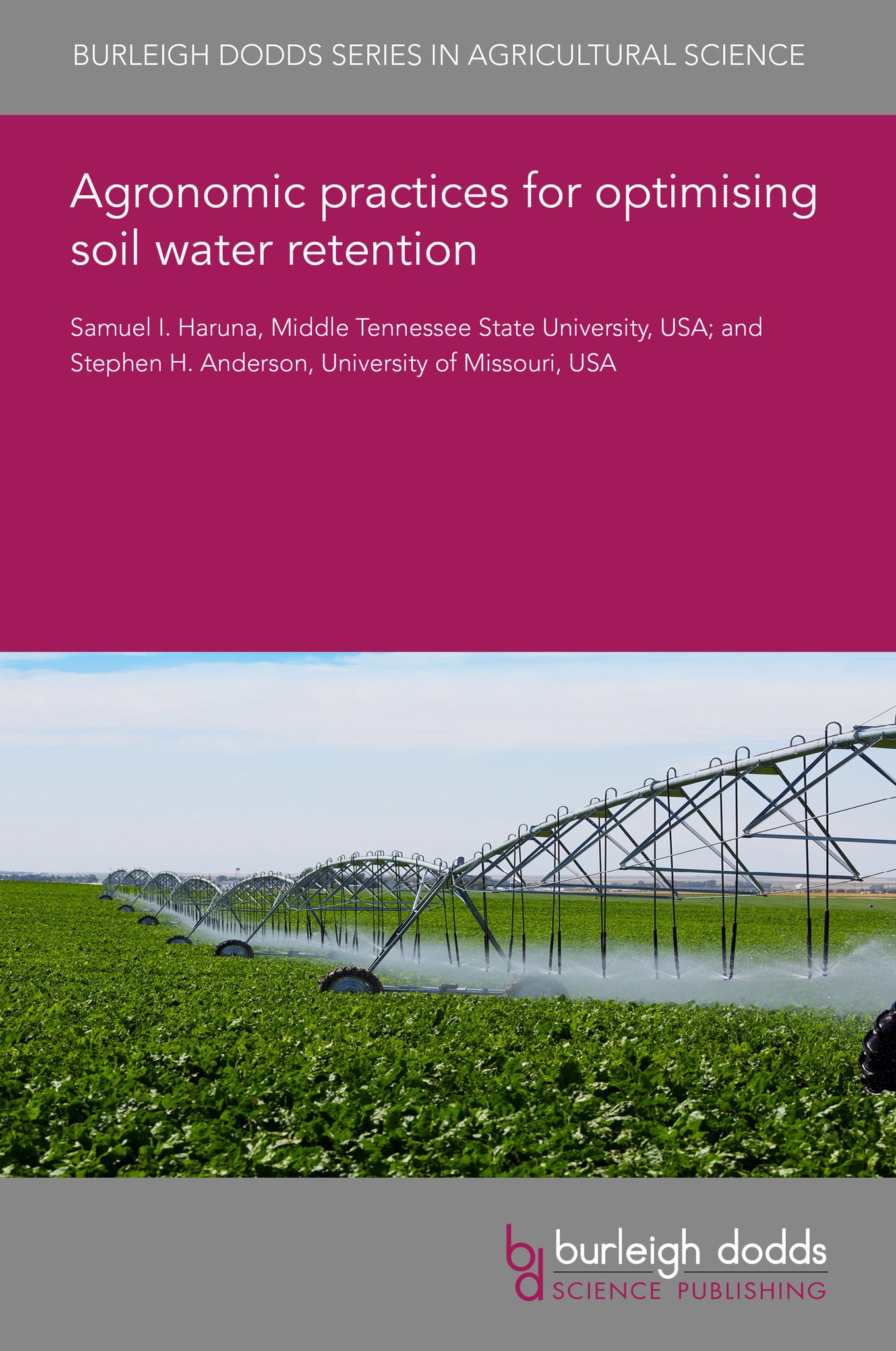We're sorry. An error has occurred
Please cancel or retry.
Agronomic practices for optimising soil water retention

Some error occured while loading the Quick View. Please close the Quick View and try reloading the page.
Couldn't load pickup availability
- Format:
-
10 June 2024

Soil water retention is an important factor that influences cropping systems and environmental sustainability and can be affected by various agronomic practices. Agronomic practices including tillage, cover cropping, crop rotation, and animal grazing practices have been implemented over several centuries to enhance crop productivity by improving soil–seed contact, reducing weed competition, increasing nutrient availability and cycling, and improving animal health. Over time and as a result of technological advancements and an increasing global human population, these practices have gradually evolved to include the use of mechanised equipment aimed at reducing human labour and increasing productivity. However, these advancements in agronomic practices can influence water infiltration and retention. This chapter discusses these practices and their influence on water infiltration and retention. Suggestions are also made on how these practices can be used to optimise soil water retention and availability.

TECHNOLOGY & ENGINEERING / Agriculture / Irrigation, Irrigation and water management, TECHNOLOGY & ENGINEERING / Agriculture / Agronomy / Crop Science, TECHNOLOGY & ENGINEERING / Agriculture / Sustainable Agriculture, TECHNOLOGY & ENGINEERING / Agriculture / Agronomy / Soil Science, Sustainable agriculture, Agricultural science, Agronomy and crop production

- 1 Introduction
- 2 Agronomic practices
- 3 Soil water infiltration and retention
- 4 Agronomic practices and water infiltration
- 5 Agronomic practices and water retention
- 6 Conclusion
- 7 Where to look for further information
- 8 References



